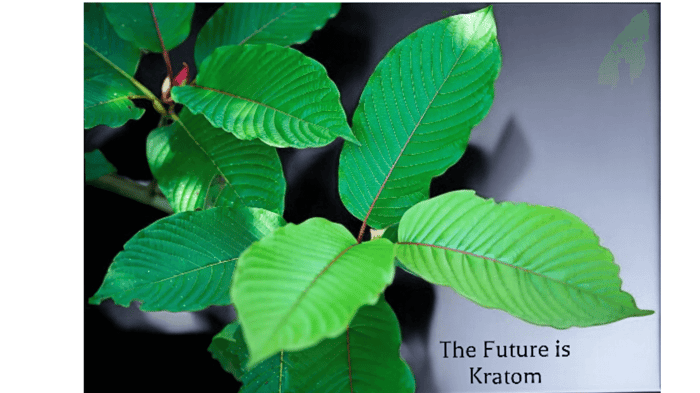
The Future of Kratom: Emerging Research and Potential Uses
The Future of Kratom: Emerging Research and Potential Uses
Kratom, a plant native to Southeast Asia, has gained significant attention worldwide for its unique properties and diverse potential applications. Traditionally used in Southeast Asia for its stimulating effects, kratom has become a subject of increasing global interest. As research into its properties and uses expands, kratom is seen as a botanical with significant promise. From its cultural roots to modern-day product developments, the future of kratom appears to be filled with potential. This article explores the future of kratom by focusing on emerging research, its potential applications, and the broader implications of its growth in global markets.
Sustainable Cultivation and Global Availability
As the global demand for kratom continues to rise, one of the most pressing concerns within the industry is how to cultivate it sustainably. Kratom is primarily grown in countries like Thailand, Indonesia, Malaysia, and Papua New Guinea, where it has traditionally been harvested by local farmers. However, as interest in kratom expands beyond Southeast Asia, ensuring that the plant is grown in an environmentally and socially responsible manner is critical.
Researchers are working to improve the cultivation process to reduce environmental impact while also ensuring a stable supply of kratom. Innovations in agricultural techniques, such as agroforestry and organic farming, could help minimize the ecological footprint of kratom production. These methods promote biodiversity and can help restore soil quality, benefiting both farmers and the environment. Additionally, increasing awareness about sustainable farming practices will encourage more ethical sourcing from suppliers and promote practices that benefit local communities.
As demand for kratom continues to rise, it is important to ensure that farmers in Southeast Asia can thrive economically without compromising the land or resources on which they depend. Supporting fair trade initiatives, promoting ethical sourcing, and establishing partnerships with local farmers will help ensure that kratom cultivation remains sustainable in the long term.
Expanding Consumer Markets and Product Development
Kratom’s versatility has sparked interest in the development of new products designed to cater to a wide range of consumer needs. Traditionally, kratom has been consumed as dried leaves, which can be chewed, brewed into tea, or ground into powder. However, with increasing demand, companies have begun to develop enhanced extracts, capsules, tinctures, and custom blends aimed at providing a more convenient and consistent experience for users.
Extracts, which are more concentrated forms of kratom, have become especially popular among consumers seeking a stronger effect. These extracts are used to create products with higher potency, offering users a more predictable experience. As companies refine their products, there will likely be a shift toward even more specialized products that target specific needs or increased energy. The development of kratom strains with different chemical profiles may further diversify the available options for consumers.
Additionally, advancements in kratom formulation will allow for more precise dosing. As the market matures, companies may introduce products with enhanced bioavailability, allowing consumers to experience the effects of kratom more quickly and effectively.
Cultural and Traditional Significance
Beyond its modern-day applications, kratom holds significant cultural and historical value, especially in Southeast Asia. For centuries, kratom leaves have been used by laborers and farmers in Thailand, Malaysia, and Indonesia to increase energy and combat fatigue. In these regions, kratom has played an integral role in daily life and social rituals, with traditional uses often tied to both physical and spiritual well-being.
As interest in kratom grows globally, there is an increasing need to preserve and respect the cultural significance of the plant. While the plant's popularity has expanded beyond its traditional roots, efforts are being made to document its historical uses and ensure that local traditions are respected in the process. Researchers and anthropologists are exploring the cultural ties between kratom and Southeast Asian communities to ensure that the plant’s development is rooted in respect for its cultural history.
At the same time, there is a growing focus on balancing modern innovation with traditional practices. As kratom becomes more commercially available, it is important to ensure that the livelihoods of local farmers in Southeast Asia are protected. Fair trade practices and partnerships with local farmers can help ensure that communities benefit from the increasing demand for kratom, while also preserving the plant’s cultural significance.
Regulatory Landscape and Industry Standards
The regulatory landscape surrounding kratom is a key factor in determining its future. As kratom becomes more widely available, governments and regulatory bodies worldwide are beginning to examine its safety and efficacy. In many regions, kratom remains unregulated, which can lead to variations in product quality and inconsistent consumer experiences. As the kratom market expands, clear regulations will be essential to protect consumers and ensure that products meet safety standards.
Several countries, including the United States, have introduced legislation to regulate kratom, with some regions opting for a ban, while others have implemented more balanced regulatory measures. Establishing clear guidelines for the sale and distribution of kratom will help create a safer future for kratom market consumers, while also promoting transparency and accountability within the industry. Regulatory bodies will need to balance the need for safety with the desire to support the growth of the kratom market, ensuring that both consumers and businesses are protected.
Industry organizations and advocacy groups are actively working to ensure that regulatory frameworks are developed in a fair and responsible manner. These groups are pushing for regulations that promote transparency, product quality, and safe consumption while also allowing for continued innovation in kratom-based products. As more research is conducted on kratom’s potential benefits and risks, regulators will be better equipped to create informed policies that support the responsible use of the plant.
The Role of Technology in The Future of Kratom Research
Technological advancements are playing a crucial role in advancing kratom research and understanding its potential applications. Modern analytical tools, such as high-performance liquid chromatography (HPLC) and mass spectrometry, are helping researchers analyze kratom’s chemical composition and identify the various alkaloids responsible for its effects. These technologies allow for more accurate and detailed studies, helping to refine kratom production techniques and improve product quality.
As researchers continue to uncover the complex properties of kratom, technological innovation will also drive improvements in product development. For instance, advancements in extraction techniques will allow for the creation of more concentrated and effective kratom products. Additionally, digital platforms and online communities are helping to connect researchers, consumers, and industry professionals, fostering greater collaboration and information-sharing.
Looking Ahead
As kratom continues to evolve within the global marketplace, ongoing research, product development, and regulatory advancements will help shape its future trajectory. The potential for kratom to impact industries ranging from wellness to agriculture is immense, and continued exploration of its uses will drive innovation. The future of kratom will depend on a balanced approach that supports sustainability, respects cultural traditions, and fosters responsible industry practices.
With increasing research, technological advancements, and a growing global market, the future of kratom is one of opportunity and possibility. By promoting ethical cultivation, supporting fair trade practices, and advancing scientific inquiry, kratom has the potential to become a widely accepted botanical with far-reaching benefits. The continued collaboration between researchers, industry stakeholders, and consumers will play a pivotal role in shaping the future of this fascinating plant.




